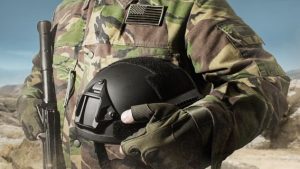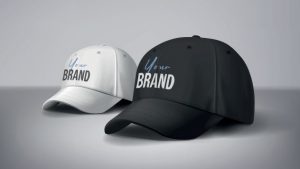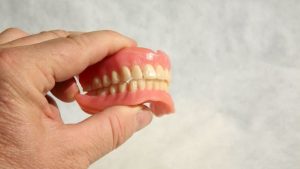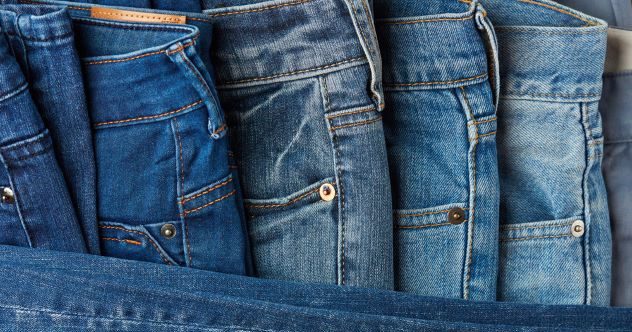Old movies, television shows, and even books tell stories of inmates digging ditches, working in fields, or laboring on the railroad. However, prison labor is much more extensive today, with many prisoners creating several everyday items, from license plates to furniture, for a small amount of money (like really small, averaging about $0.63 per hour). Male and female inmates across America have made or are currently making items used by the public daily. Here is a list of ten products that you may not have realized were made by prisoners.
Related: 10 Everyday Things Made with Animal By-Products
10 Victoria’s Secret Lingerie

Back in the 1980s, some of the lingerie made for Victoria’s Secret was manufactured by Third Generation. The garment manufacturer used contracted prisoners to sew the sexy panties seen in storefronts and catalogs. Inmates from Leath Correctional Institution in Greenwood were contracted to sew garments and lingerie for several retail firms, including Victoria’s Secret.
This ended in the 1990s after retailers received backlash, even though Third Generation claimed they wanted to hire the inmates after they were released. Victoria’s Secret also issued a statement claiming they had no idea that prison labor was being used to produce their products. Still, they immediately cut ties with the manufacturer after the discovery. In the third season of Orange Is the New Black, inmates sew lingerie for a company that is a nod to Victoria’s Secret.[1]
9 Canoes
Building a Cedar Strip Canoe over 10 months!
Inmates in Colorado are taught skills while incarcerated that will help them become more marketable after being released. The Colorado Correctional Industries program oversaw more than 50 inmates’ work programs in fields such as agriculture and manufacturing. Inmates at the Fremont Prison spent much of their time making license plates, but they later learned how to make fiberglass-sealed canoes.
The prisoners would use redwood scraps from the furniture shop to create the canoes. Every layer of the canoe is tacked and glued in a tongue-and-groove manner before the wood is sanded. Once the wood is smooth, the prisoners add resin and fiberglass to waterproof each canoe. They created a single-seat canoe weighing around 35 pounds (16 kilograms) and a double-seater weighing around 70 pounds (32 kilograms). The canoes retailed for around $1,500, well below the normal going price of about $5,000.[2]
8 Military Jackets

The Federal Prison Industries, better known as UNICOR, is a government corporation that sells quality goods made by prisoners. UNICOR has several factories that consist of convicts working hard to create products. Military jackets are just one of the many products the prisoners make to help clothe the U.S. military. They also make helmets, uniforms, and shoes for them.
Government agencies are required to buy from UNICOR, which is the cheapest way for the government to create clothes for the soldiers. Inmates were once paid wages as low as 23 cents to create the equipment and apparel. The government may be saving money by using inmate labor, but that doesn’t mean they are receiving a quality product. Tens of thousands of helmets made by inmates were once recalled due to poor workmanship. Ironically, the inmates also make police equipment.[3]
7 Baseball Hats

Baseball is known as the great American pastime, and what is more American than baseball hats being made by inmates in an overcrowded correction facility? We just learned that UNICOR employs prisoners to create military and police gear, but they also make a few products that can be sold to the general public.
In order to prevent the competition of private goods and prison-made goods, UNICOR is prohibited from selling many items to anyone outside the government. One of those items that they are allowed to sell to private companies and customers is the baseball hat. The baseball hats are sold in both solid and mesh, are available in several colors, and even have the option to be embroidered.[4]
6 Blue Jeans
Behind the scenes of Prison Blues
One of America’s last remaining jean manufacturers is operated from a prison in Oregon. The Eastern Oregon Correctional Institution is a medium-security state prison that houses over 1,500 inmates. The facility located in Pendleton, Oregon, is where Prison Blues’ jeans are made. About 75 incarcerated adults work in the factory five days a week for roughly eight hours a day, making jeans and other apparel items.
Workers only make up to around $300 per week, but the job is there to teach them skills that will help them once released. In America, the brand is mostly seen as a work jean for loggers and other outdoor workers competing with brands such as Carhart. Although they may not be as popular as Levi’s in America, Prison Blues’ jeans and denim jackets are catching on in places like Japan where it is more fashionable with the young crowd.[5]
5 McDonald’s Uniforms

McDonald’s already turns huge profits every year by serving burgers and fries to millions of people around the world, but the fast-food company has also found another way to keep those profits higher. McDonald’s employee uniforms are sewn by prisoners in the state of Oregon. Even though McDonald’s doesn’t directly use inmate labor to make the uniforms, they depend on prison labor to reduce costs and create higher profits.
The mega-company also used prison labor in the past for many of its frozen foods as well. Inmates have prepared potatoes for their famous fries, processed beef for burgers, and made a variety of chicken products.[6]
4 Dentures

An investigation by the Houston Chronicle showed that inmates were being denied the right to dentures when many of them needed them. In response to the investigation, the Texas Department of Criminal Justice announced plans to open a new dental clinic offering the first sets of 3-D printed teeth in U.S. prisons. The machine was installed at the Goree Unit in Huntsville, and the plan was to print hundreds of dentures for inmates. Even though these dentures are made at a prison, they are not actually made by prisoners.
In 2007, a group of eight female inmates in Kansas were selected to make dentures for low-income patients. Once the patients have been fitted, the female prisoner technicians create a wax and plastic teeth mold of the impression. The clinic must then make sure the mold is a perfect fit before returning it to the female prisoners to add the plastic teeth and acrylic to the final set of dentures. The program was so successful that the facility was being expanded to allow more female inmates the opportunity to make dentures.[7]
3 Park Furniture
Prisoners build furniture as they rebuild their lives
For more than 40 years, PRIDE (Prison Rehabilitative Industries and Diversified Enterprises) has been helping Florida inmates learn real-world skills and earn certifications that prepare them to become productive citizens once released. They claim that inmates participating in their training programs are three times less likely to commit a new offense. The inmate training program teaches prisoners how to make more than 3,000 products and services, such as furniture, storage boxes, apparel, food, license plates, and more.
The program also teaches inmates how to make park furniture such as picnic tables, benches, kiosks, and trash receptacles. They can create wooden and metal-leg tables and make several types of benches, such as park benches, transit benches, contour benches, and trail benches. Those looking to purchase park furniture from PRIDE can simply visit their website and place an order by phone or email with the customer service center.[8]
2 Caskets
Making Billy Graham’s Casket
Angola Prison in Louisiana is home to some of the state’s most notorious criminals, and the prison has been known to be one of the most dangerous prisons in America. The prisoners at Angola have plenty to keep them busy as the prison is very self-sufficient. Prisoners can work on the farm growing food for inmate consumption or spend their time in the woodwork shop. Many of the items that prisoners make, ranging from bowls to rocking chairs, will be sold at the Angola Prison Rodeo, which takes place in April and October.
Some of the inmates who have obtained woodworking skills create wooden caskets. There was once a time when the warden of the prison noticed that some inmates were being buried in cardboard boxes due to their families not having sufficient funds for something else. He allowed inmates to start constructing plywood caskets for themselves, and it helped inmates earn a new skill. They used their new skills to create caskets for the public that would only cost around $200 to make, and each casket was lined with a mattress pad and featured a wooden cross on the lid. Billy Graham was even buried in a pine plywood casket that was made by Angola inmates.[9]
1 Art
Inmates to sell their art, bring in money for their families, victims
San Quentin State Prison in California has housed several famous inmates, such as Richard Ramirez (the infamous Night Stalker) and Charles Manson, but inmates today are getting a rare opportunity to sell their art. A program called ArtReach: Reaching Out with Art and Poetry from Death Row has allowed inmates on death row to sell their artwork while incarcerated.
Inmates create all forms of art, ranging from paintings to poetry, and sell them through an online store. The program, founded by artist Nicola White, was created to provide inmates and their families a higher percentage of their earnings from sales than the prison’s own hobby program. Some people don’t agree with giving inmates a platform to sell their art, but sometimes, the most beautiful art can be found in unexpected places.[10]
fact checked by
Darci Heikkinen
>>> Read full article>>>
Copyright for syndicated content belongs to the linked Source : Listverse – https://listverse.com/2024/07/12/10-everyday-products-surprisingly-made-by-inmates/































